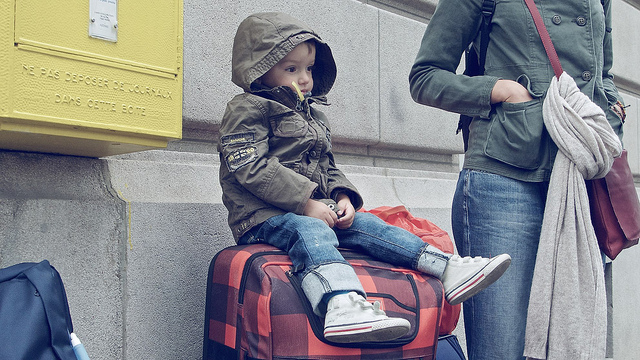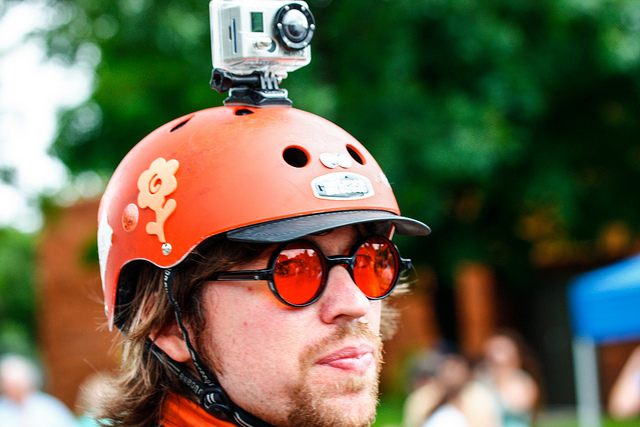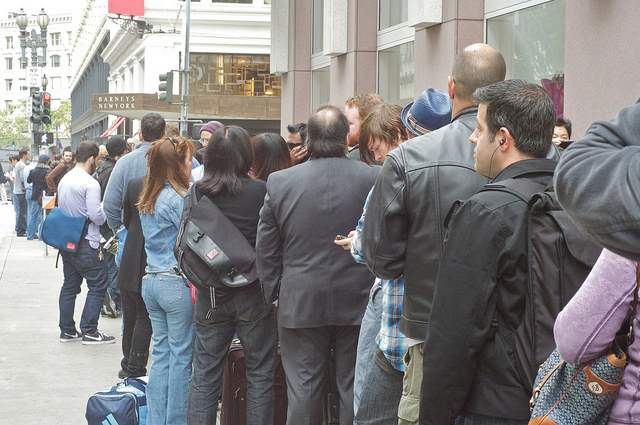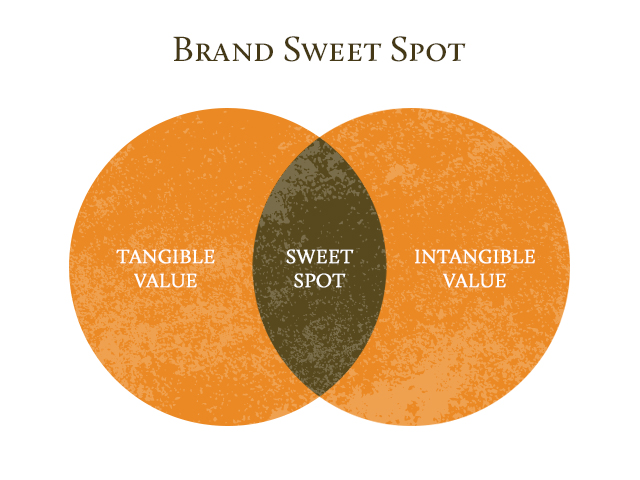Unlock the Magic in Your Story Now
Get the Free 20 questions to Ask Before Launching Your Idea workbook when you sign up for occasional updates.
Get the Free 20 questions to Ask Before Launching Your Idea workbook when you sign up for occasional updates.
Articles filed in: Storytelling
The Purpose Of Brand Storytelling
filed in Marketing, Storytelling, Strategy
 Every September while my son was growing up there was a ritual to be upheld. Of course we had the usual beginning of school year things to do and a checklist to follow, but what Adam really cared about more than all of that, was choosing the football boots he would wear for that season. Football is more than a sport in England, it’s a badge of belonging. It’s also a shortcut to mattering to your peers. The boots are a part of the story the young player tells himself about what he’s setting out to achieve that season and how he’s going to matter.
Every September while my son was growing up there was a ritual to be upheld. Of course we had the usual beginning of school year things to do and a checklist to follow, but what Adam really cared about more than all of that, was choosing the football boots he would wear for that season. Football is more than a sport in England, it’s a badge of belonging. It’s also a shortcut to mattering to your peers. The boots are a part of the story the young player tells himself about what he’s setting out to achieve that season and how he’s going to matter.
I’m not sure how or when the adidas Predator brand of football boots became part of Adam’s story, but these were the boots he rationalised were ‘the best’ and only they in turn would make him be ‘his best’. He never, ever wore any other football boots. These weren’t just boots though, they were months of hopes and dreams about goals that might be scored, or games that could be won with a single accurate cross, wrapped up in red leather with three sliver stripes down the side.
It’s easy to get caught up in the ‘how to’ of telling your brand story and even easier still to believe that the primary reason to invest in telling it is to sell more. But brand storytelling should primarily be the driver of participation, not sales. The way we enable our customers to attach meaning to our products and the reason they want to belong.
Because when people feel like they belong—that they are part of the brand story and can own it, they become loyal customers. It turns out that the best brands in the world are a set of co-dependent shared stories, a two way experience between the customer and the brand.
The brands we really love are the ones that create difference for us, they make us feel like we belong, that we are part of their story and they are part of ours. Just like adidas became part of my son’s story when he was growing up.
Image Tito Perez.
What Problem Are You Solving?
filed in Marketing, Storytelling, Strategy
 Every venture capitalist will tell you that the best startup pitches focus more on the problem than on the solution. A potential investor may give you just a single sentence to make them understand why your idea will succeed in a world where most people have what they need.
Every venture capitalist will tell you that the best startup pitches focus more on the problem than on the solution. A potential investor may give you just a single sentence to make them understand why your idea will succeed in a world where most people have what they need.
And yet, as business owners we get so caught up in our solution that we forget to focus on the problem we solve and who we solve it for. Framing the problem you solve in just one sentence is a great discipline and one that most businesses have never practiced, which is why the ones that do succeed.
The Single Sentence Problem
Warby Parker—Why do glasses cost as much as an iPhone?
Dropbox—People have no reliable way to store, access, update, save and share their files and data from one place, a USB or an emailed file doesn’t cut it.
Mint—’You spend the majority of your life working for your money, but do you know how your money works for you?’
Dollar Shave Club—Men are paying too much for shave tech they don’t need.
Swish Online—Australian bloggers can’t access quick and easy website support from a human in real time when they have a problem.
Uber—Why can’t I just push a button and get a ride?
Now it’s your turn.
Image by Emil Zakhaviev.
We Need To Stop Telling Customers What We Do
filed in Marketing, Storytelling, Strategy
 I’m driving along behind the white Ezy Tiles van, when we stop at a red light and I get close enough to read their sales pitch, which is an image and a single line.
I’m driving along behind the white Ezy Tiles van, when we stop at a red light and I get close enough to read their sales pitch, which is an image and a single line.
The picture is of three guys wearing dust masks that look like something you’d see in a documentary about chemical warfare. Each one is brandishing some kind of heavy duty drill that it seems could demolish a room in minutes. The dust cloud that surrounds them obliterates the view of the river from the balcony in the background.
“We remove tiles and floors,” the tagline on the white van shouts at me.
“No you don’t,” I can’t help thinking.
“You come into my home and leave a trail of dust and destruction in your wake.”
While I might need old tiles to be removed, what I really want is a smooth, level surface to lay my gorgeous new tiles on.
It goes without saying that your process needs to delight customers every step of the way.
But your customers don’t want to know what you do. They want to know how you’re going to enable them to do what they want to do.
There’s a reason IKEA leaves the instructions and the confusing assortment of screws inside the packaging.
People almost never buy the process. They buy the result.
We really should be selling them what they want to be sold.
Image by Marcus Linder.
The Truth About Starbucks And The $4 Coffee
filed in Marketing, Storytelling, Strategy
 Before Starbucks you could buy your morning coffee for a dollar or two.
Before Starbucks you could buy your morning coffee for a dollar or two.
So how was it possible for Starbucks to more than double the price of coffee overnight?
The truth is that Starbucks didn’t actually invent the $4 coffee—they created the $2 experience.
$2 felt like a bargain for the feeling of belonging in a comfy chair at ‘the third place’.
A place we now feel a connection to at the sight of a single green straw, even when we’re not in it.
And a place we didn’t even know we wanted until Starbucks showed us that we clearly did.
As a marketer your job is not to convince people that your product or service is better and therefore worth more. Your job is to find, understand and serve the people who are ready to believe a different story about where the value really lies.
Image by Bart Heird.
The Limitations Of Knowing ‘How To’
filed in Storytelling, Strategy
 For years we’ve been rewarded for knowing the right answer. All of those gummed gold stars licked and stuck in copybooks next to neatly spaced handwriting, served their purpose.
For years we’ve been rewarded for knowing the right answer. All of those gummed gold stars licked and stuck in copybooks next to neatly spaced handwriting, served their purpose.
We can’t help wanting to know the answer.
Knowing ‘how to’ is barely an advantage to the twenty first century business owner or entrepreneur, because there is no one right answer. There is no one way to get to where you want to go—and that’s a great thing! If there was a ‘how to’ guide then everyone would have the formula and nothing we created would be unique.
Nobody told Jobs and Wozniak how to build a computer company, let alone how to make it one of the most loved brands in the world, and Howard Schultz didn’t get the Starbucks magic from a manual.
Nobody can tell you what to stand for, or how your values, wants and needs, should intersect with those of your customers and then manifest as a business, an idea or experience. Figuring out the destination is hard—but recognising it, is more valuable than knowing exactly how you’re going to get there. Until you do the hard work of understanding the ‘why’ and the ‘who for’ every tactical ‘how to’ has the potential to take you down the wrong track.
The most useful answers are the ones we take time to figure out for ourselves—not the ones that everyone can find in a handbook.
It turns out that it’s more powerful to have your own map than it is to have someone else’s directions. Once you have that map, you’ll always have a way to get from where you are to where you want to go.
Image by Caroline Jung.
 We’ve been stuck in a time warp for the past fifty years with a
We’ve been stuck in a time warp for the past fifty years with a  As marketers we invest a great deal of time and money working out how to tell the story of our products. But if we can agree that marketing is giving people something to talk about, why aren’t we using resources in equal measure to do that. What if we began with a new set of questions?
As marketers we invest a great deal of time and money working out how to tell the story of our products. But if we can agree that marketing is giving people something to talk about, why aren’t we using resources in equal measure to do that. What if we began with a new set of questions? Every time I upgrade my phone the guys at Virgin try to convince me that there are much better options than the iPhone. When they ask me why I prefer the iPhone I never have a definitive answer. It’s not always easy to put that kind of value into words.
Every time I upgrade my phone the guys at Virgin try to convince me that there are much better options than the iPhone. When they ask me why I prefer the iPhone I never have a definitive answer. It’s not always easy to put that kind of value into words.
 The middle-aged couple at the garden centre stood with furrowed brows as the sales assistant explained the difference between the varieties of lemon tree. They took a step back and almost looked alarmed when he explained how one particular variety would bear a lot of fruit, but could become tall, straggly and unmanageable. Huge smiles of relief spread across their faces when he finally led them to a tree that would give them less fruit, but only grow to about a metre tall.
The middle-aged couple at the garden centre stood with furrowed brows as the sales assistant explained the difference between the varieties of lemon tree. They took a step back and almost looked alarmed when he explained how one particular variety would bear a lot of fruit, but could become tall, straggly and unmanageable. Huge smiles of relief spread across their faces when he finally led them to a tree that would give them less fruit, but only grow to about a metre tall.